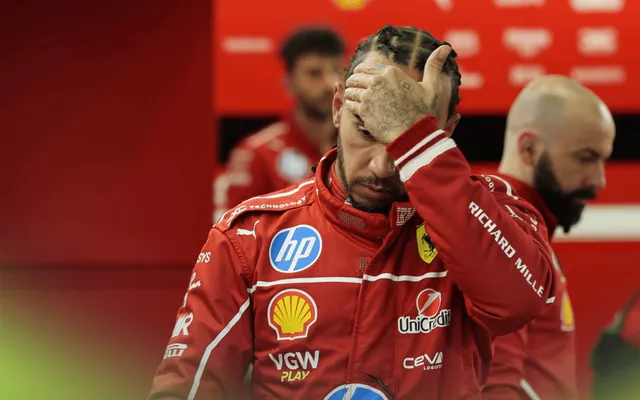Ferrari at a Crossroads: Culture, Crisis, and the Countdown to Redemption
Ferrari may still be flashing smiles in public, but the mood inside Maranello tells a different story. Behind the garage doors and polished PR statements, Formula 1’s most iconic team is unraveling. The 2025 season so far hasn’t been defined by a lack of talent or even outright pace — it’s been defined by something far more dangerous: systemic disarray.
The red-clad team’s problems aren’t new, but this year has added an acute layer of urgency. From delayed technical upgrades to baffling strategic calls and a clear breakdown in internal cohesion, Ferrari appears to be spiraling. The Montreal Grand Prix was meant to be a turning point. Charles Leclerc looked competitive during Friday practice, and Lewis Hamilton, showing increasing comfort in the SF-25, was positive after FP3. But by Sunday, everything collapsed.
Leclerc was struck down by a power unit failure early in the race. Hamilton’s car, already compromised after a collision with a rogue groundhog in the early laps, was thrown into midfield traffic by a questionable pit call. Even with Ferrari nailing the fastest pit stop of the weekend, it all amounted to nothing. That’s the story of Ferrari’s 2025: brief flashes of brilliance undone by a structural fog that refuses to lift.
The real concern is not that Ferrari is struggling — that happens to every team. It’s that the team seems directionless. When the drivers perform, the car falters. When the car performs, the strategy implodes. It’s not a speed problem or a talent deficit. It’s a leadership crisis.

Cracks in the Foundation
Fred Vasseur, brought in to steady the ship, now finds himself under scrutiny. Italian media has already begun sharpening the knives, with outlets like Gazzetta dello Sport reporting that Ferrari’s upper management is actively evaluating alternatives. One name repeatedly mentioned is Antonello Coletta, Ferrari’s World Endurance Championship boss, who’s seen as a possible replacement if the current regime fails to turn things around.
Vasseur recently made headlines when he cryptically stated, “We’ve changed everything but one thing.” Those within the paddock have speculated he was referring not to the car, but to Ferrari’s top-down, opaque management culture — a structure that has consumed every team principal since Jean Todt.
This dysfunction was laid bare not by data or strategy errors, but by Hamilton himself. After the Montreal race, the seven-time world champion didn’t talk about tire temperatures or drag coefficients. He said, “There are a lot of changes that need to be made in the system,” followed by, “I wish I could tell you what is happening.” These weren’t throwaway comments. Hamilton, who has become as much a political statesman as a driver in recent years, was sending a message. And in Formula 1, such messages are rarely accidental.

Hamilton the Catalyst
Hamilton didn’t join Ferrari to simply compete. He joined to lead, to transform a team that had become mired in its own mythology. His influence is supposed to be cultural as much as technical — a shift in mentality. But even he seems to be running into walls, and the frustration is starting to show. After Shanghai, he reportedly pushed for rear suspension upgrades. They still haven’t arrived.
When asked why, his measured response — “I don’t know why we haven’t been…” — trailed off into silence. That’s not confusion. That’s restraint. A driver hinting that the barriers are no longer on the track but within the organization itself.
Meanwhile, Ferrari’s competitors are accelerating. McLaren, lean and aggressive, brought upgrades that turned heads. Mercedes, long considered in limbo, is now making tangible gains. Red Bull continues to refine rather than reinvent — and remains the team to beat. In contrast, Ferrari is stuck in a holding pattern, waiting on upgrades that seem perpetually delayed and implementing strategies that collapse under pressure.

A Culture of Hesitation
The issue isn’t incompetence — Ferrari still has elite drivers and a capable technical team. It’s the culture of caution. At Ferrari, decisions are second-guessed into oblivion. Planning masquerades as progress. This is not a new affliction, but it is becoming a terminal one. The political inertia that has plagued the team for over a decade now threatens to squander its best lineup in years.
Vasseur is under siege, not only from the media but potentially from within. If Ferrari’s leadership fails to publicly back him — or worse, begins scouting for replacements before the end of the summer — it will prove once again that the team’s biggest opponent isn’t on the track, but in the boardroom.
And Hamilton? He’s not the kind of driver to go down quietly. If Ferrari continues to deny him the tools and environment he needs, his tone may shift from diplomatic to confrontational. Once that happens, the internal pressure will explode into a very public reckoning.
What Comes Next
The next two races — Austria and Silverstone — will be pivotal. These circuits aren’t just demanding on the cars; they’re unforgiving of indecision. Silverstone, in particular, is Hamilton’s home race. If Ferrari can’t deliver upgrades by then — or if the upgrades fail — it will be more than just points lost. It will be the loss of trust, the erosion of hope, and perhaps the beginning of an irreparable rift.
Ferrari has the raw ingredients: a car that isn’t fundamentally flawed, two top-tier drivers, and a wealth of resources. What it lacks is clarity — of purpose, of leadership, of direction. Without that, it doesn’t matter how many horsepower the SF-25 can produce.
The Clock Is Ticking
Ferrari has always been more than a team — it’s a mythos, a symbol. But in modern Formula 1, legacy is weight, not wings. Hamilton didn’t come to Maranello to be part of a museum piece. He came to build something new. But he can’t do it alone. If Ferrari wants to rise again, it must first look in the mirror — and acknowledge the cracks in its foundation.
The next few months will define more than a championship campaign. They will define whether Ferrari is finally ready to evolve — or whether the ghosts of its past will keep dragging it down. Hamilton is a mirror, and what he reflects is uncomfortable: complacency, deflection, and a dangerous reluctance to change.
If Maranello’s leadership can’t rally around Vasseur and Hamilton now, they may find themselves not only losing races — but losing the one man capable of restoring their legacy.
In Formula 1, time is always running out. For Ferrari, that clock has never been louder.
Full Video:





